Elastic threads are often found in children's dresses and summer sundresses. They are also suitable for adult women, who look very romantic in such outfits. Gatherings made with elastic threads allow clothes to fit any figure and hug the body. They do not restrict movement and do not lose their elasticity for quite a long time. Sewing with such an elastic is not difficult, you just need to follow some rules. This material will tell you how to sew with an elastic thread on a sewing machine, how to sew such a thin elastic band to fabric or canvas on a machine.
- What is elastic thread
- What and where can you use a thread with an elastic band
- Types of elastic threads
- Check the quality of the rubber thread and the choice
- How to sew with elastic thread
- How to adjust the lower thread tension
- The upper thread tension should be loosened.
- Threading a sewing machine
- Sewing a trial sample
- Features of creating an elastic assembly
- How to sew elastic thread with a zigzag stitch
- Some examples of using elastic thread
What is elastic thread
Elastic thread is a stretchy thread made from an internal rubber vein covered in a colored braid. In this way, it begins to look like a fabric thread and is practically invisible on the canvas if the braid color is chosen correctly. There are a huge number of colors in which such threads are dyed.
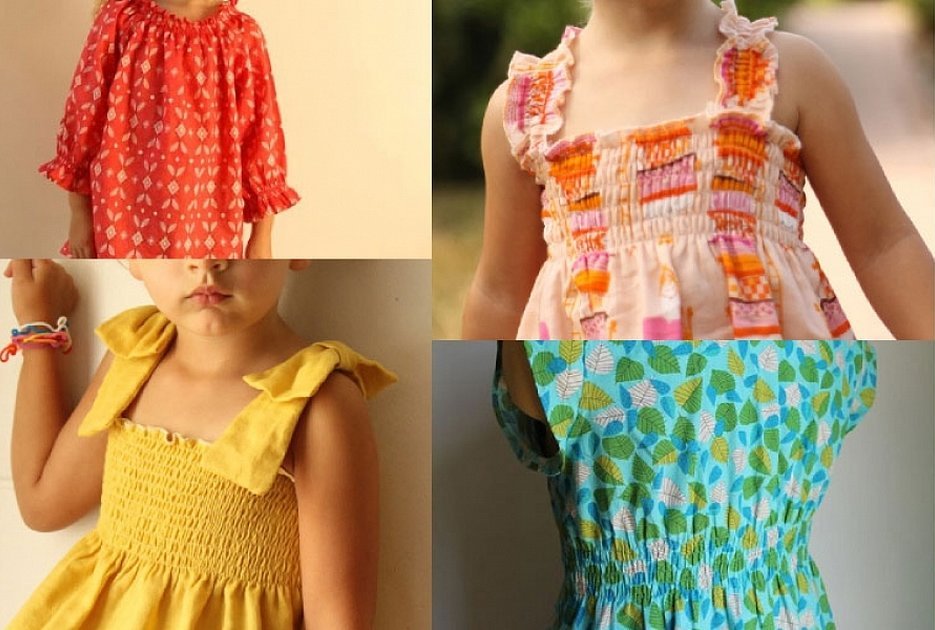
Elastic thread can have different degrees of elasticity and other properties. The most common thickness is 1 millimeter and the shape is a regular spool.
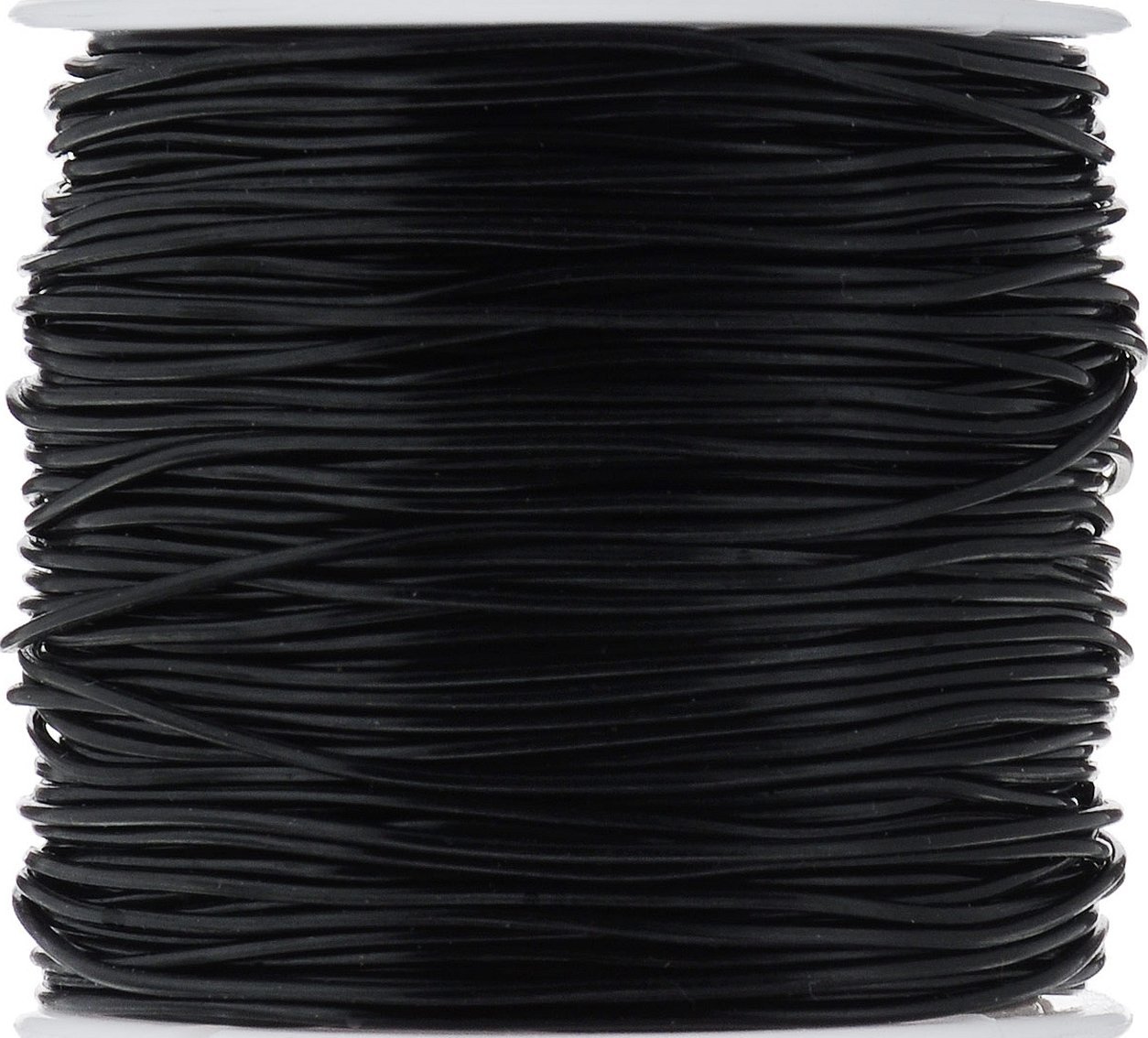
What and where can you use a thread with an elastic band
Rubber threads are very often used in sewing clothes to increase the fit of some parts of things to the body. These can be cuffs, waist, corset, turtleneck, and so on. This type of thread is also used to create elastic gathers of fabric or cloth. Its qualitative difference from elastic tape is that the elastic does not require drawstrings and is hung directly on the fabric.
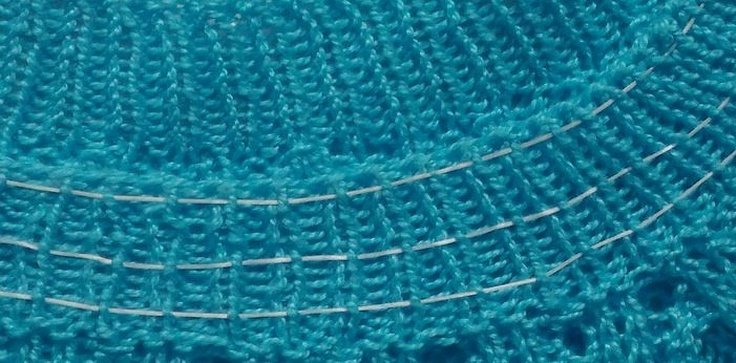
The elastic thread is thin enough to be easily threaded into a sewing machine, just like regular natural or synthetic threads. As already mentioned, the wide range of colors of the products allows you to completely hide the threads on any material of different textures. This means that there is no need to sew on the front side.
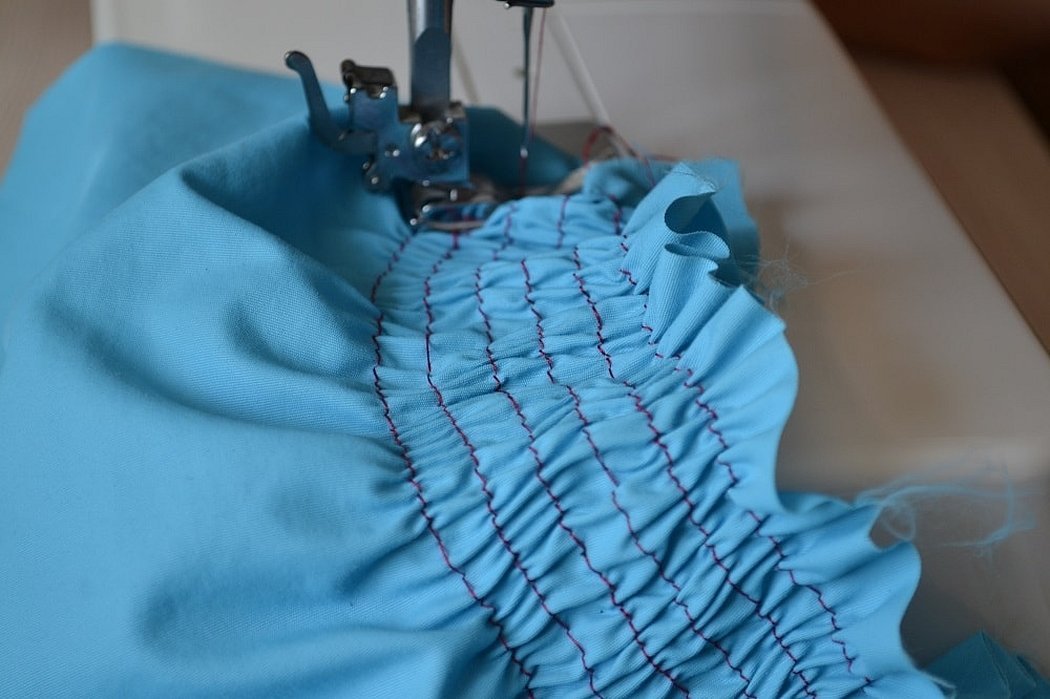
If elastic is used in knitting, it is added to any type of yarn. This is done to make the fabric more elastic. A good handy helper is spandex, which is used for the upper part of socks. Thanks to this, the elastic of the sock fits quite tightly to the foot and does not allow the skin to come into contact with the rubber.
Important! Despite all the positive aspects and areas of use, rubber is short-lived. The more it is used (worn, washed, dried), the faster it becomes unusable.
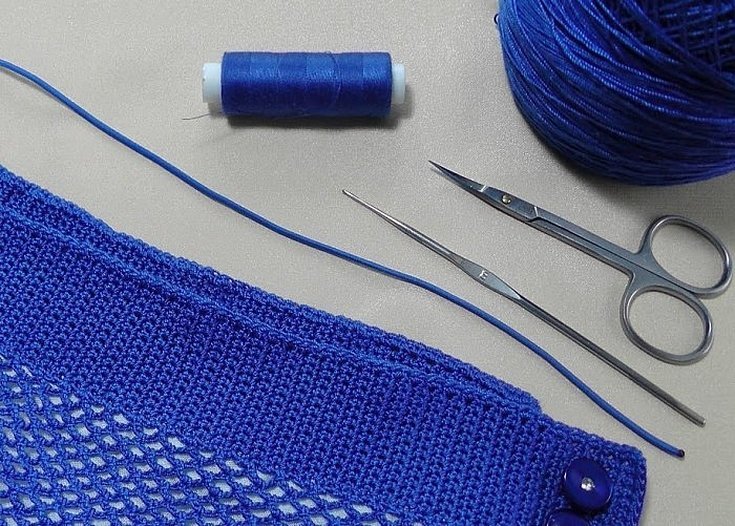
Types of elastic threads
All such threads for knitting, sewing and insertion can be divided into two types:
- rubber;
- elastomeric.
The most common is the rubber type. The main core is obtained by cutting the rubber sheet into microfibers or by extrusion. This part is braided with cotton or synthetic material on a special machine. The final product has good wear-resistant and elastic properties.
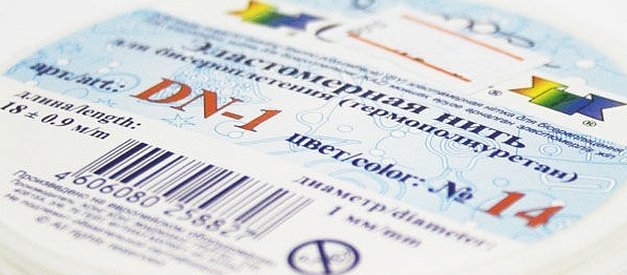
Modern and more environmentally friendly threads are made of elastomer. The material makes them more durable and resistant to stretching, which reaches ×6 times. All this is possible due to the unique properties of the material. It also helps to achieve exceptional thread fineness. This is the reason for its wide application in the knitwear industry.
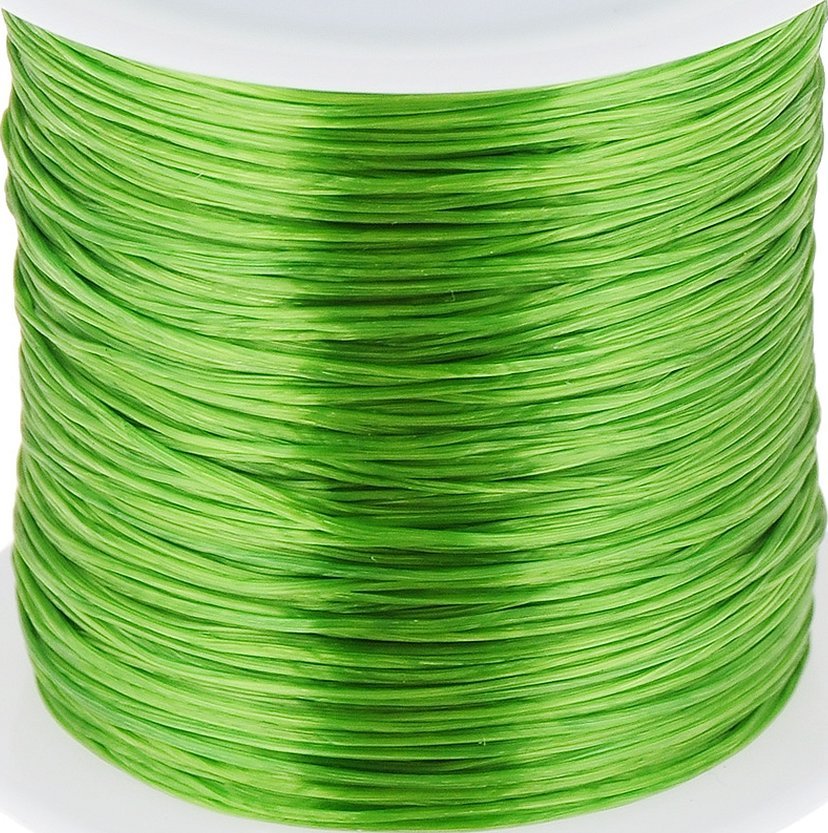
Many of the properties are also provided by the braiding material. It can be:
- natural (cotton, linen);
- synthetic (viscose);
- absent.
If there is no braiding, the diameter of the product immediately decreases to 0.4–0.8 millimeters, which is used in weaving beaded bracelets and other items in the form of socks and stockings.
Despite this, the lack of braiding is the reason for the following negative aspects:
- reducing the number of colors to choose from;
- cannot be used in combination with glass beads or cuttings;
- Do not use in sewing machines.
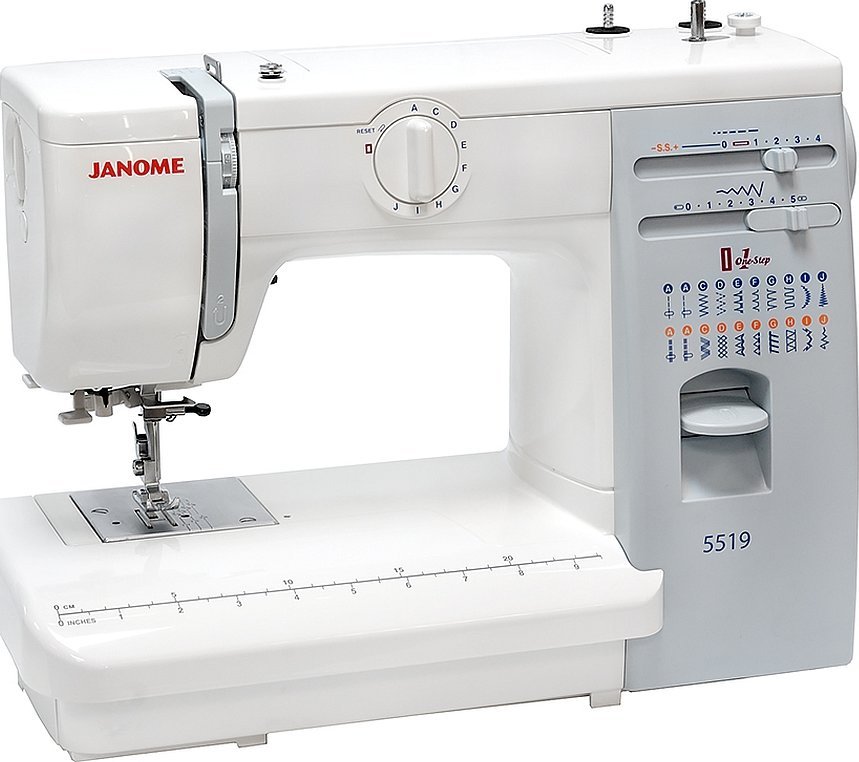
Check the quality of the rubber thread and the choice
When purchasing or ordering any such product for use in sewing, it is necessary to carefully examine the pros and cons of each type, choose one that will perfectly match the material of cutting and sewing. It is always recommended to ask for quality certificates when buying thread in bulk and check the quality of any elastic before making a purchase.

How to sew with elastic thread
First, you need to make test stitches on the front side of the fabric or cut. After that, it is advisable to look at the back side and make sure that the interlacing of the threads is located exactly there. It is also important to adjust the tension of the upper device so that the thread does not create loops.
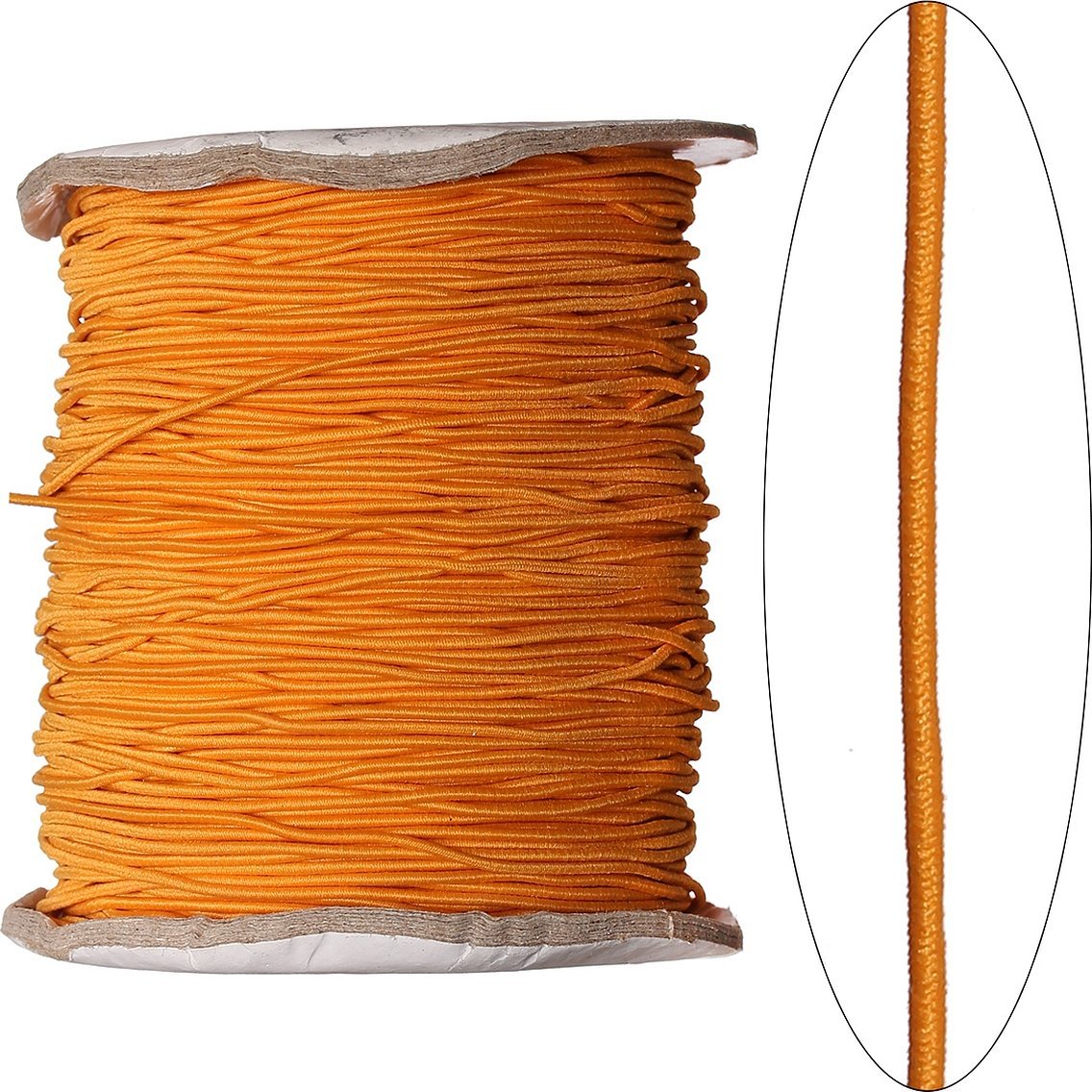
You can make a beautiful stitch by setting the stitch length on the machine to the maximum value. A large stitch and strong thread tension from below will create an even and beautiful gathering on a piece or item.
Important! One line is usually not enough, so it is recommended to make two or three parallel assemblies at once, located at a distance of 5 to 10 millimeters from each other.
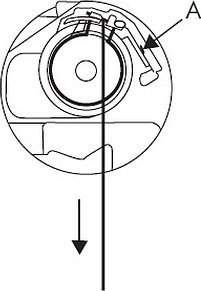
How to adjust the lower thread tension
The adjustment of the tightening of the entire assembly depends on the tension of the lower thread. All bobbin cases, depending on the type of shuttle, have a tension screw located in different places, but it should always be there. To determine the quality of the tightening, you need to gradually tighten the screw and make test stitches.
The screw rotates half a turn in either direction. You should always be careful with this setting, as when threading regular threads, the screw will have to be reset to its original position.

The upper thread tension should be loosened.
The sewing procedure begins with threading the machine. For the top, it is best to use the strongest type, for example, reinforced. It is best suited for use as the top type and creates a reliable tie that is fixed in the fabric and does not tear.
But the tension does not always need to be increased. Sometimes it needs to be relaxed, as this can cause constant thread breakage and uneven stitching without extra loops. All this can only be checked empirically for each individual sewing machine model. It will be enough to make a couple of stitches and understand how well the upper and lower feed mechanisms work.
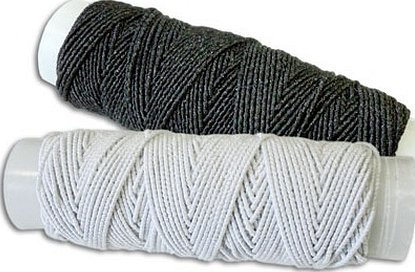
Threading a sewing machine
Like any thread, the elastic is threaded into the bobbin case of the device. For the top, use a strong thread made of cotton, silk or synthetic material that matches the color of the fabric. In general, the threading looks like this:
- winding thread onto a bobbin;
- threading the cap;
- tension adjustment;
- installing the cap into the machine;
- testing lines.
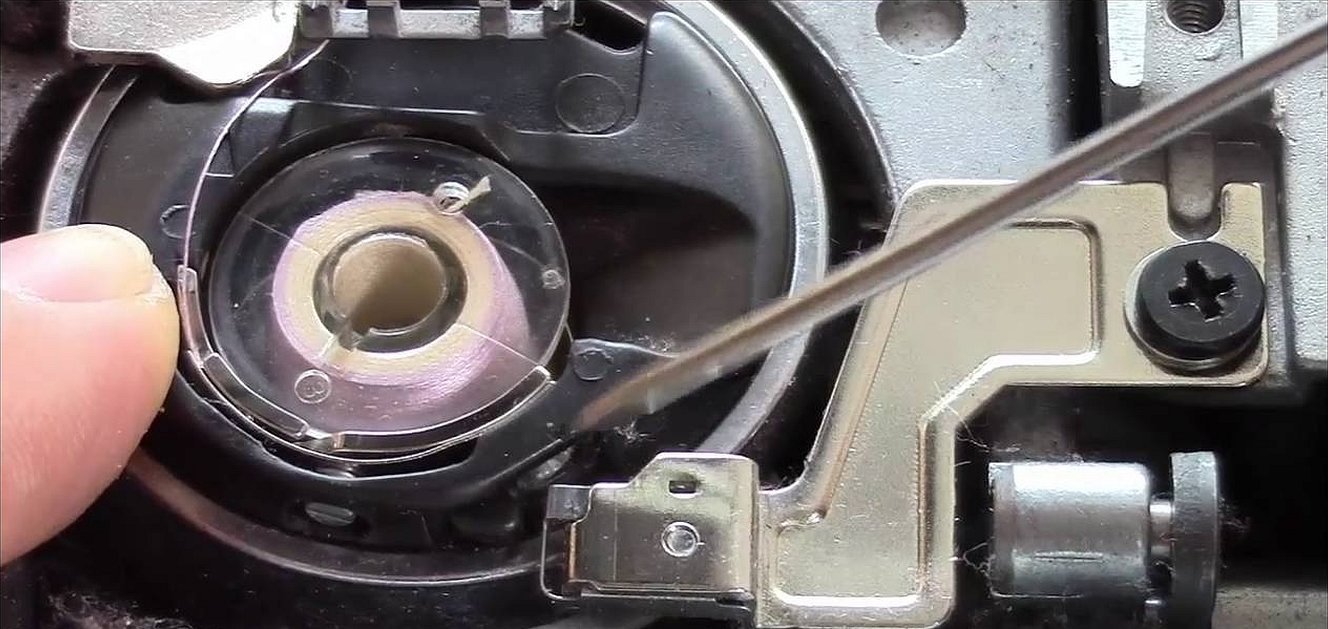
Sewing a trial sample
The first step that is done after threading and tension adjustment. It is never recommended to ignore it. In order not to spoil the work product due to incorrect settings, the operation of the device should be tested on a small and unnecessary piece of fabric. To do this, straight lines are marked on the cut along which the stitch will go. It is better to make several such lines. Then the work is carried out, on the basis of which a person gets an idea of the quality of tension adjustment and threading.
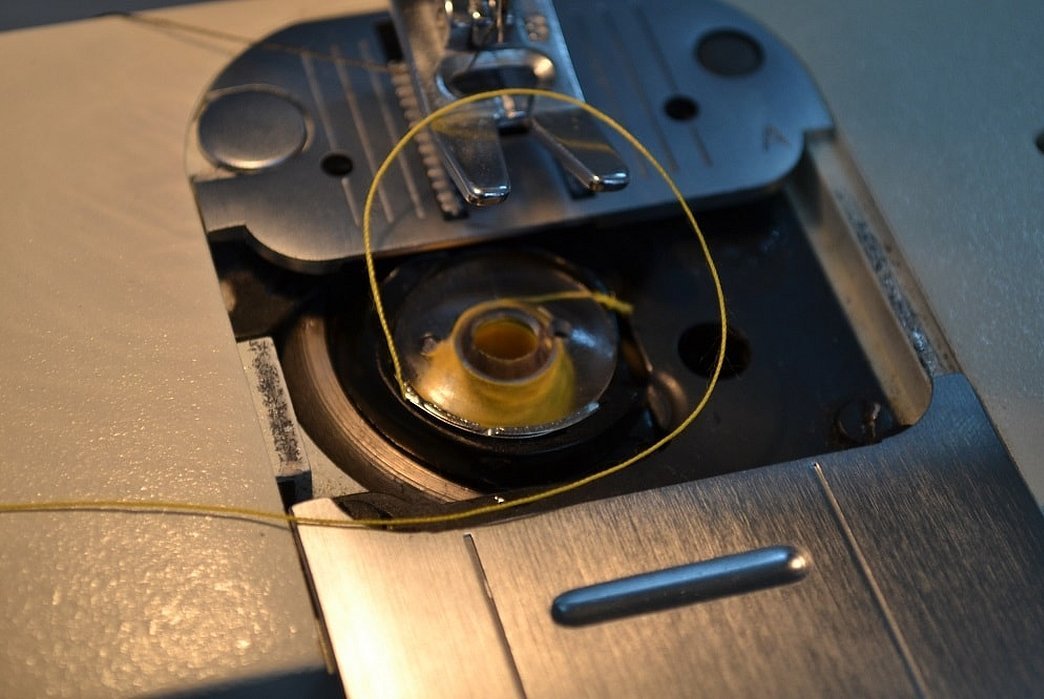
Features of creating an elastic assembly
Gatherings can be created not only straight, but also in a circle or oval. This is especially relevant for skirts and sundresses or for dress backs in the form of a small insert. Gatherings of this kind are much more convenient to do on separate pattern pieces. If circular gathering is done on a large piece of fabric, it is recommended to place the seam not at the back, but on the side.
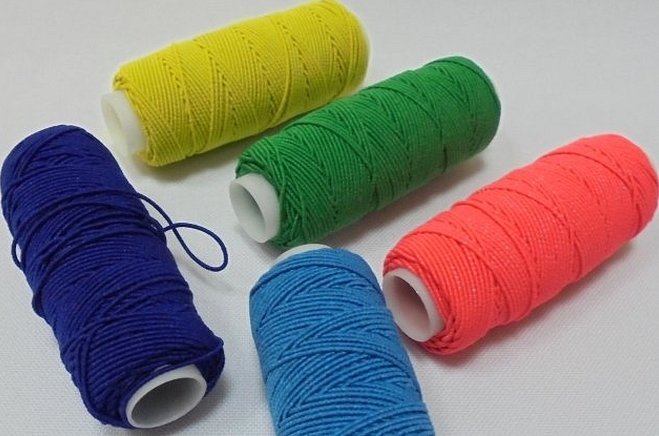
When working, it is necessary to ensure that the upper thread lies freely on the fabric. This will allow you to tighten all the elastic bands inside the assembly after sewing all the assembly lines.

How to sew elastic thread with a zigzag stitch
Another way to use the elastic thread is to lay it in a zigzag, rather than winding it onto a bobbin. To do this, first of all, the zigzag itself is adjusted (width - 4 millimeters, frequency - 2). Then, while making the zigzag, the elastic is also laid under the foot.
Not everyone can do this, as some experience in such a line is necessary, but it also has considerable advantages. The thread can be tightened at the discretion of the person, which regulates the degree of compression of the assembly on the fabric. Upon completion, it is necessary to secure the pivot ends to the edges of the canvas or part.
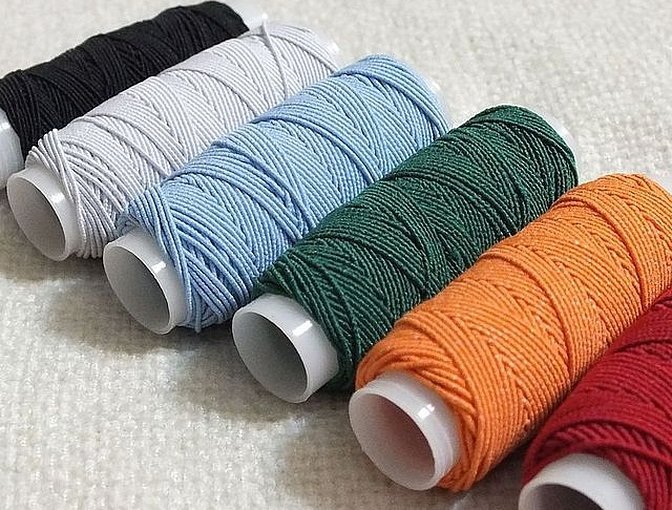
Some examples of using elastic thread
Below are some examples of using this material for sewing and decorating clothes for children and adults:
- The neckline of a girl's dress, which will be decorated with such an elastic band, will not only look good, but will also add comfort when wearing.
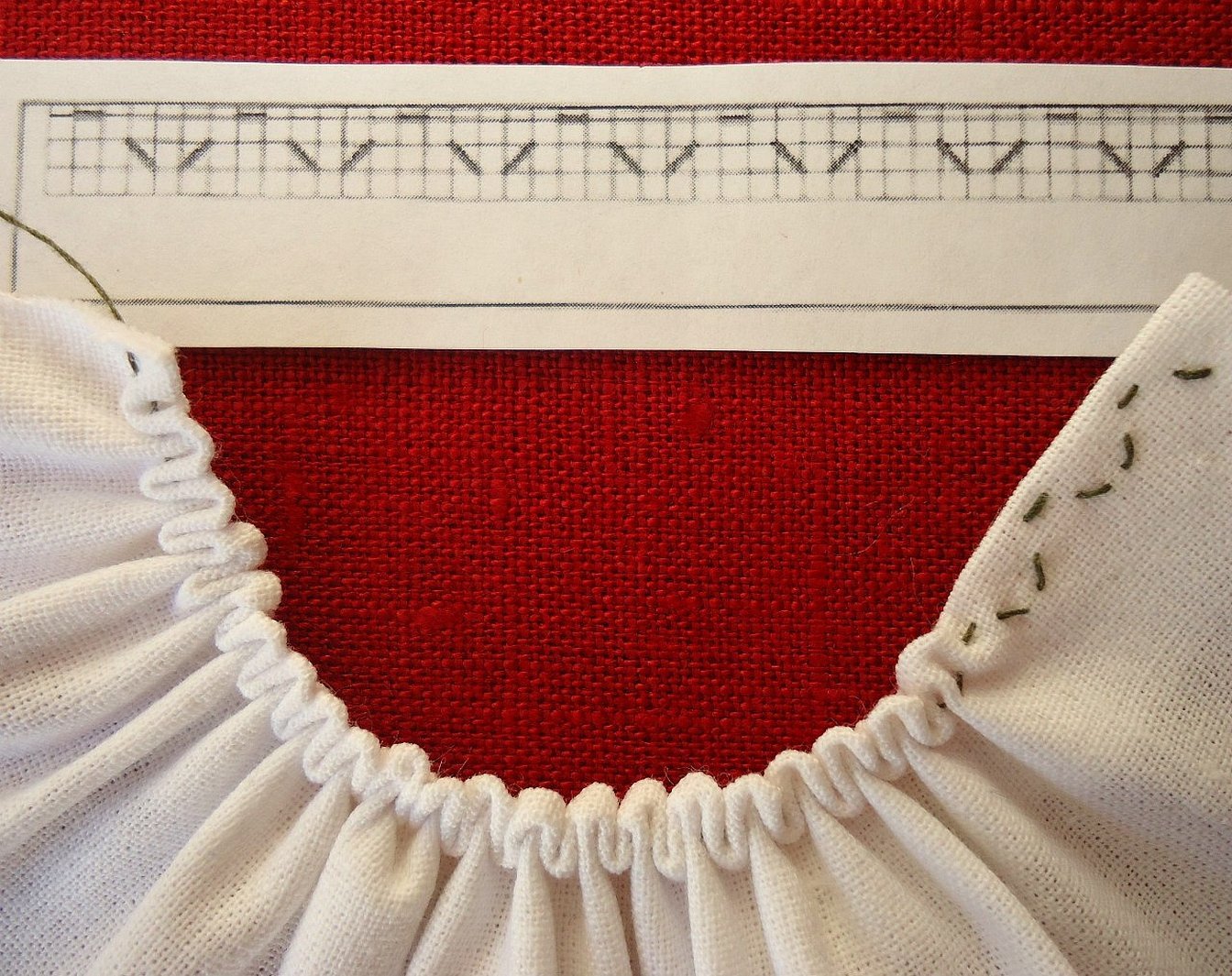
- Waist shaping for pregnant women makes clothes look beautiful and increases comfort for the expectant mother.
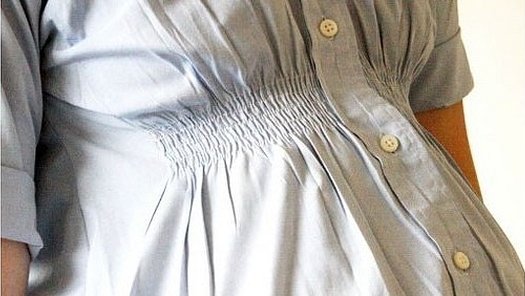
- Gatherings on the back of a sundress for warm weather and home wear can breathe life into even the oldest and most unnecessary item.
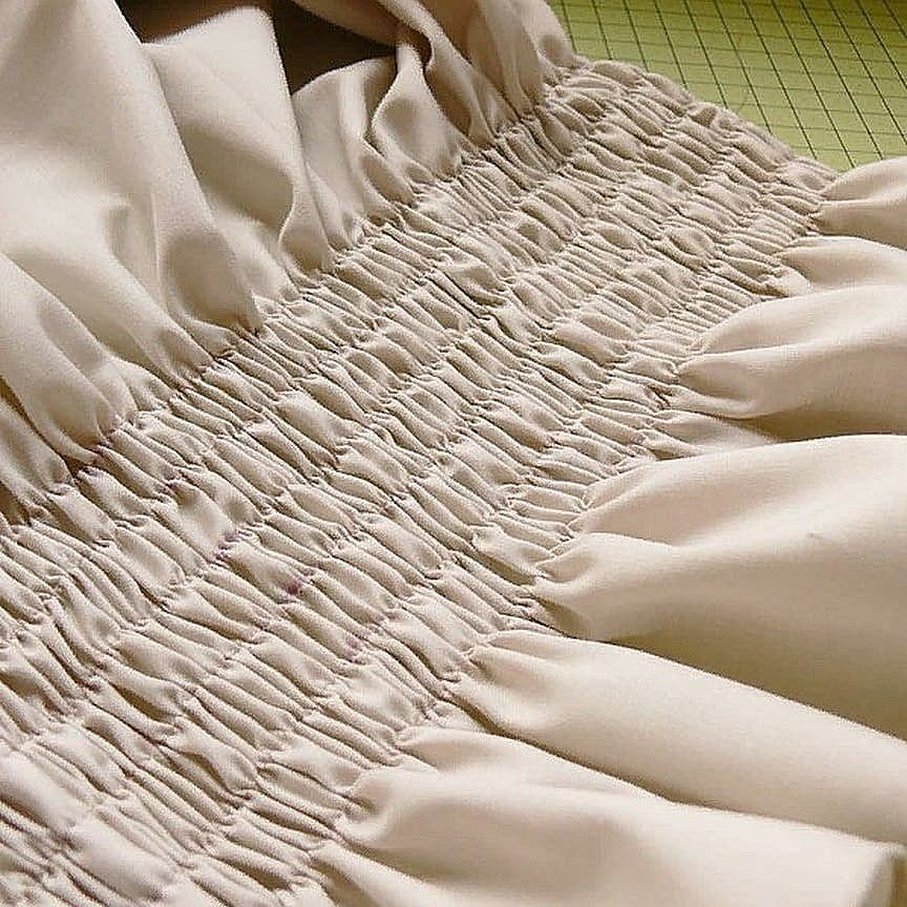
Thus, here it was told how to sew a ready-made elastic band from veins into a canvas or ready-made clothes. You can see that there is nothing complicated in this, because the process is no different from sewing with ordinary types of threads.




